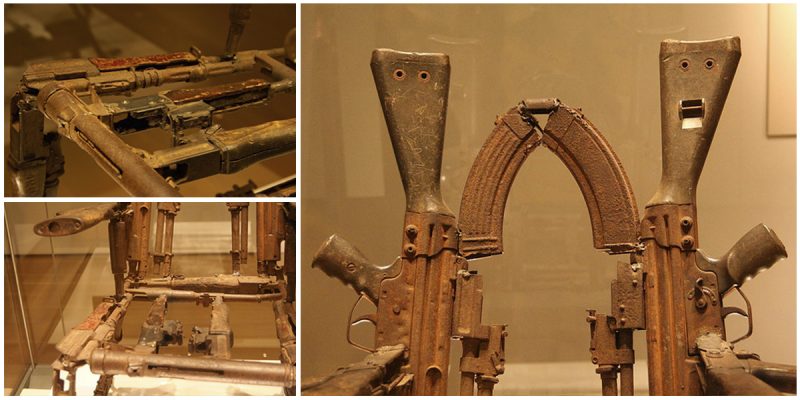The Mozambican Civil War began in 1977, two years after Mozambique gained independence from Portuguese colonial rule.
During the war, where many children had to use weapons and commit many crimes, seven million guns alone poured into the country, and about one million people were killed or died from starvation. The war finally ended fifteen years later, in 1992, when the Soviet Union collapsed (which had supplied Mozambique with economic and military aid during the war).
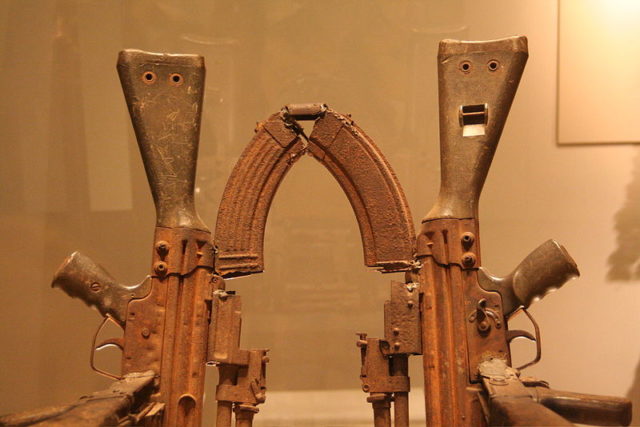
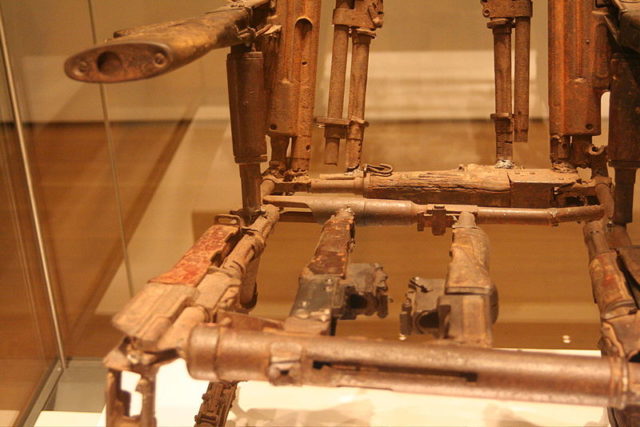
This throne, known as “The Throne of Weapons,“ was made in 2001 by the Mozambican artist Cristovao Canhavato, known as (Kester), as part of the “Transforming Arms into Ploughshares” project. It is entirely made of discarded weapons, mostly AK-47 assault rifles.
The TAP project was founded by Bishop Dinis Sengulane and supported by the Christian Council of Mozambique. Over seven million weapons, previously used by combatants on both sides of the Mozambican Civil War, were voluntarily exchanged for domestic, construction, and agricultural tools, such as sewing machines, plows, and bicycles. Artists then turned the decommissioned weapons into sculptures.
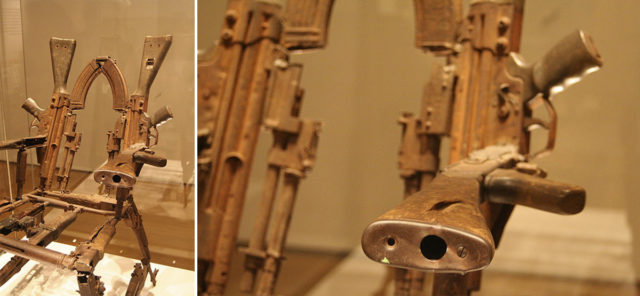
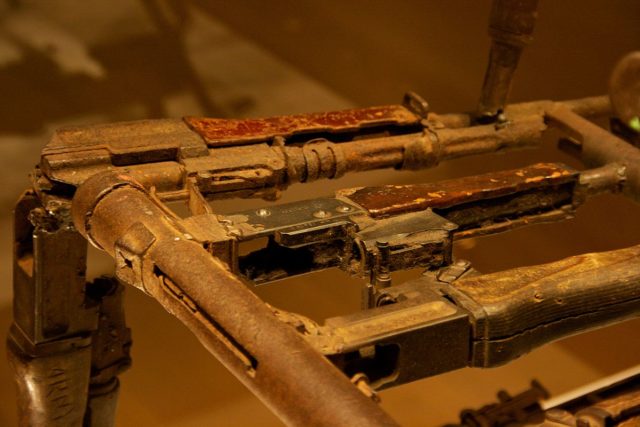
The weapons used for the Throne originated in seven different countries (Portugal, Eastern Europe, and North Korea), so Kester’s idea was to reflect the broad reach of the international arms trade.
It is a powerful piece wrapped in messages which represent both the tragedy of the war and the nation’s hope for peace. Most of the guns were imported during the Civil War, but some of the guns even date back to the Second World War.
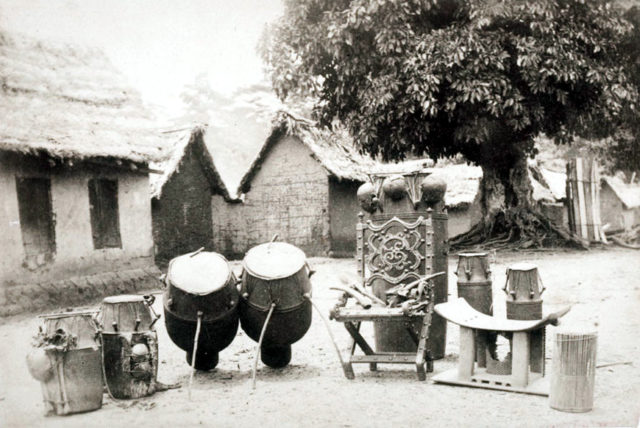
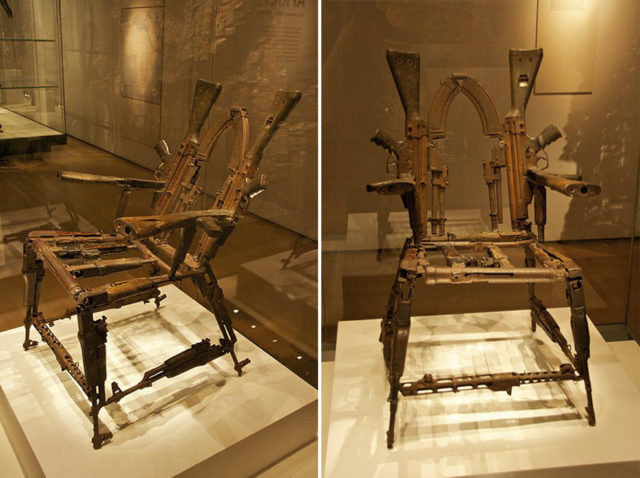
In 2002, the British Museum bought the sculpture, and it became a part of its collection, ever since. Thrones are also traditional African symbols of immense power and progression of a king or a chief.
Examples of such thrones, which originate from Congo, Zanzibar, and Ghana, can be seen in the African collections of the British Museum.
